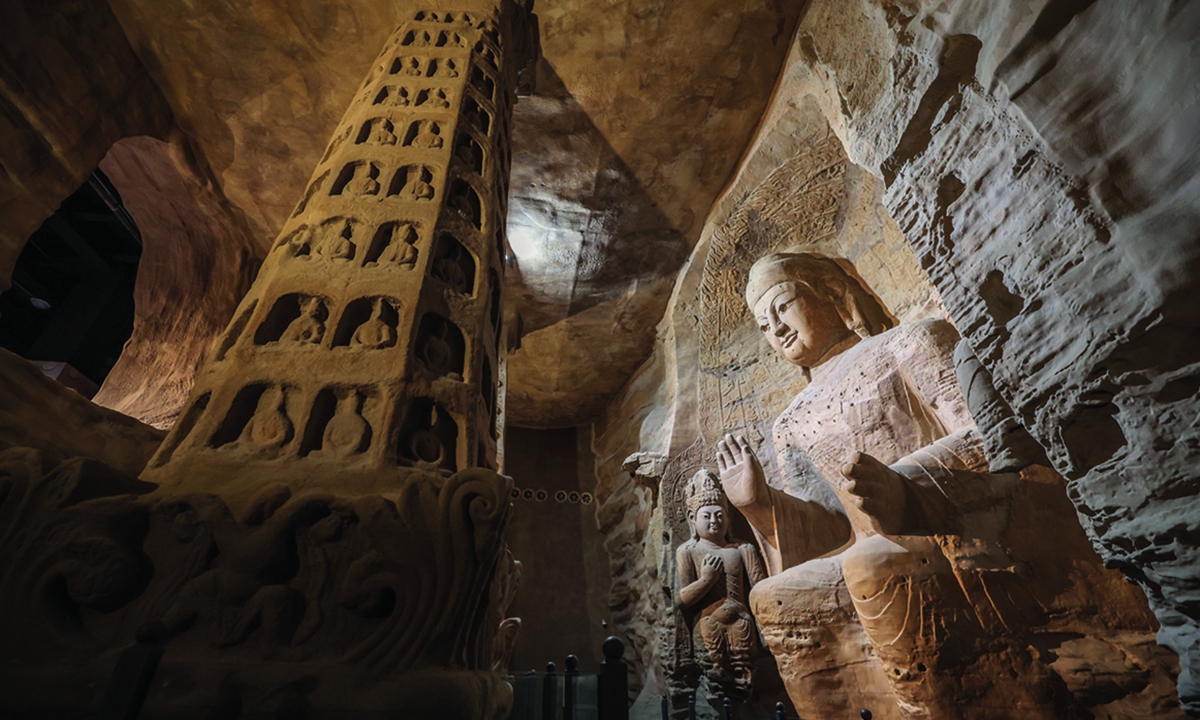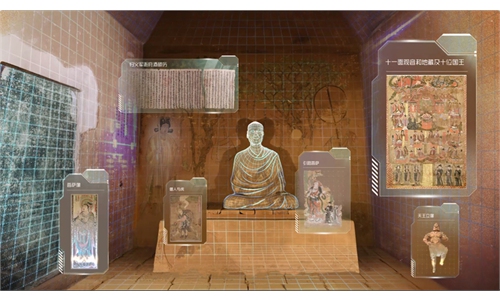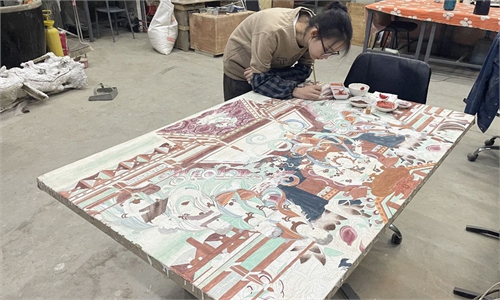ARTS / CULTURE & LEISURE
3D printed exhibit in Qingdao mall draws visitors into ancient grottoes

The 3D printed Yungang Grotteos in Qingdao, Shandong Province Photo: IC
A new exhibition is currently grabbing the attention of visitors to the City Media Plaza in Qingdao, East China's Shandong Province, with a 10-meter-tall 3D Buddha "statue."
The grand Buddha is a 1:1 3D printed replica of a statue of Amitabha from the No.3 cave at the Yungang Grottoes, a World Cultural Heritage Site in North China's Shanxi Province.
The statue is not alone. 3D printed recreations of two pagoda-shaped sculptures and a wall covered with murals are also on display. Wang Shanshan, the project planner, told the Global Times that the 17.9-meter-long and 13.6-meter-wide exhibition space welcomes around 10,000 people a day during peak periods.
"Bringing ancient relics back to life and getting them to everyone is the project's intention," Wang noted.
Supported by the 3D printing team at the Yungang Grottoes, the reproduction of the large statue took an "enormous" amount of preparation, Wang noted. Around 10,000 photos of the original cave were taken in order to create a digital model.
The statue itself was assembled from 842 individually printed models, which took the team three months to put them together.
"This is a typical example of how 3D printing technology can be implemented in large-scale cultural relic reproduction," Feng Xiaoquan, an expert in digital archaeology, explained to the Global Times.
Scanning, computer modeling and installation are the basic concepts of 3D reproduction, Feng said, adding that getting things right still requires a well trained and experienced team.
The Qingdao show is not the first one that the 3D printing technology team at the Yungang Grottoes has worked on.
In 2020, another 3D printed Yungang Grottoes exhibition was held in Shanghai, where the team displayed more than 100 pieces of 1:1 Yungang replicas made of biodegradable materials.
Ning Bo, head of the team, told said that such technological restoration not only benefits the field of relic restoration, but also helps promote the inheritance of Chinese civilization.
"Our work is to record the important information on the surface of these cultural relics in a complete and scientific way through digital technology," Ning said.
Listed by UNESCO as a World Cultural Heritage Site in 2001, the Yungang Grottoes has 1,500 years of history. It is the largest grottoes group belonging to the ancient Xianbei nomadic people in China.
Feng said that starting from 2020, the digital focus for China's grottoes began shifting from "protection and archiving" to entering the "creative industries and virtual collections" new era.
"I hope people will be able to see what the Yungang Grottoes looked like today 1,000 years from now," Ning said.



